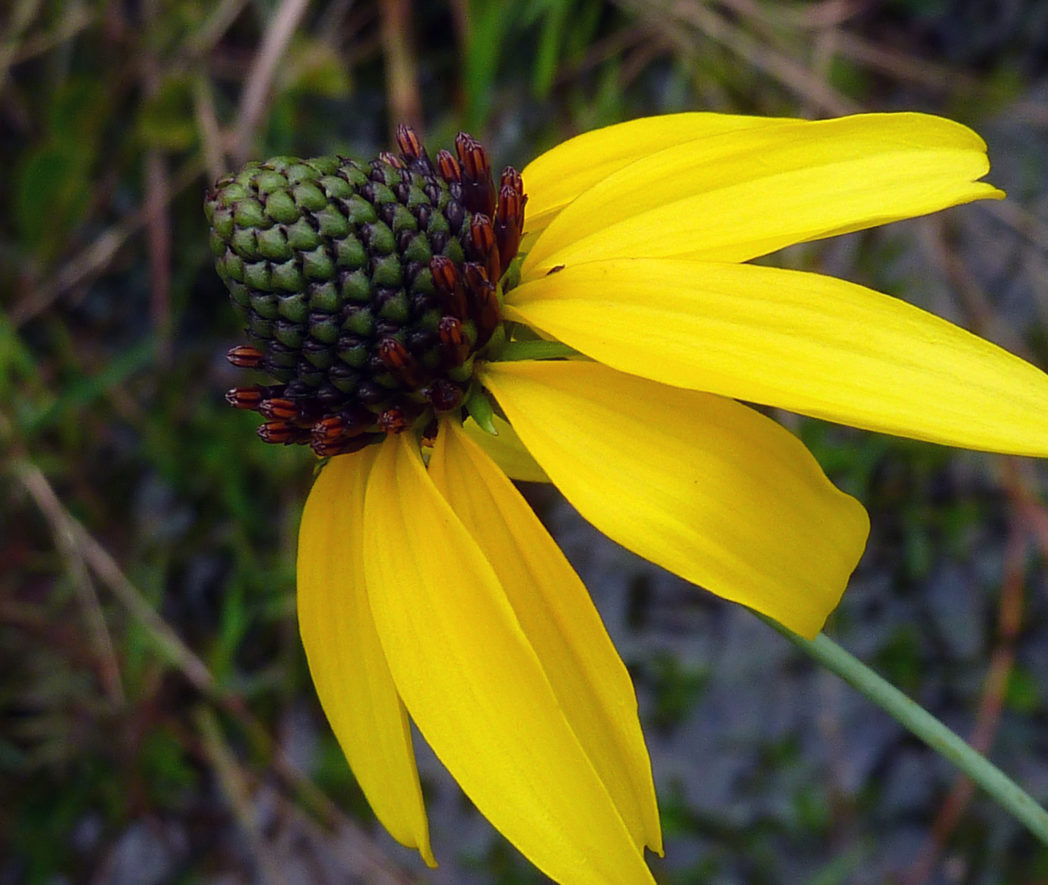Things to do in the summer garden
Article by Claudia Larsen. Pictured above: Shiny coneflower (Rudbeckia nitida) by Eleanor Dietrich
Some wildflowers wait until summer to emerge and begin faster growth to take their place in the fall garden. Check your garden for new arrivals such as coneflowers, blue curls and sunflowers.
If you want plants to reseed in areas where they are doing well, remember not to smother the seed with mulch. Most seeds need light to germinate.
Butterfly eggs are found in singles or in a small mass on the underside of leaves on host plants. Look for them with a small hand lens and marvel in their intricate shapes and diversity. Butterflies have several broods during the summer, so keep an eye out for their pupa stage to watch their emergence.
Use cooler times of the day to weed unwanted weeds and grasses from flower beds. Don’t take chances with lightning – thunder is nature’s way of telling you to retreat from the garden.
Try wildflower combinations in large pots on your porch or patio. Three to five species can make an interesting arrangement. A clumping grass or a trailing wildflower can enhance the plant palette. Don’t be afraid to cut back or shape errant stems. Some plants will re-bloom if deadheaded. Experiment and have fun!
If you are adding containerized plants to fill landscape areas, try planting after a rainstorm when the soil is saturated. Water only to settle dirt around the root zone. Your transplanting will be more successful, and you will be conserving water.
Change bird bath water and hummingbird feeders often to discourage fungus and bacteria and limit mosquito hatching. Many birds will dart in and out of the wildflower garden during the summer to catch insects for their chicks.
Speaking of bugs, insects are a part of healthy landscapes, so accept the fact you will have some minor plant damage. Use integrated pest management to detect and control unwanted insect pest infestations. Remove and destroy leaves and stems that are heavily infested with aphids or mealy bugs. Drop large slow-moving pests into soapy water.
Learn how beneficial insects can help control destructive insects. Florida “good guys” include ladybugs, big-eyed bugs, green lacewing, assassin bug, green lynx spiders, and parasitic flies and wasps.
Summer is a good time to take a gardening class. Check with your local county Extension office for programs on landscape design, turf alternatives or landscaping for wildlife.
Take photos of your flowers as butterflies and insects visit. Use the best to make notecards or share them with us so we can post them on the Foundation website and social media outlets.
Happy gardening!

